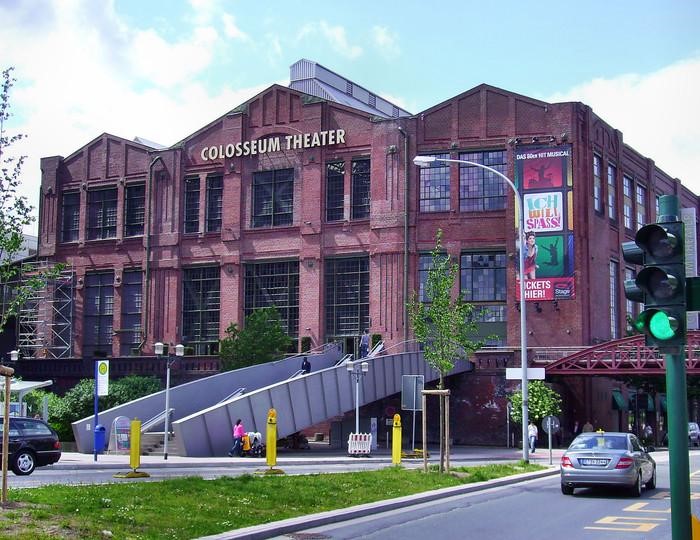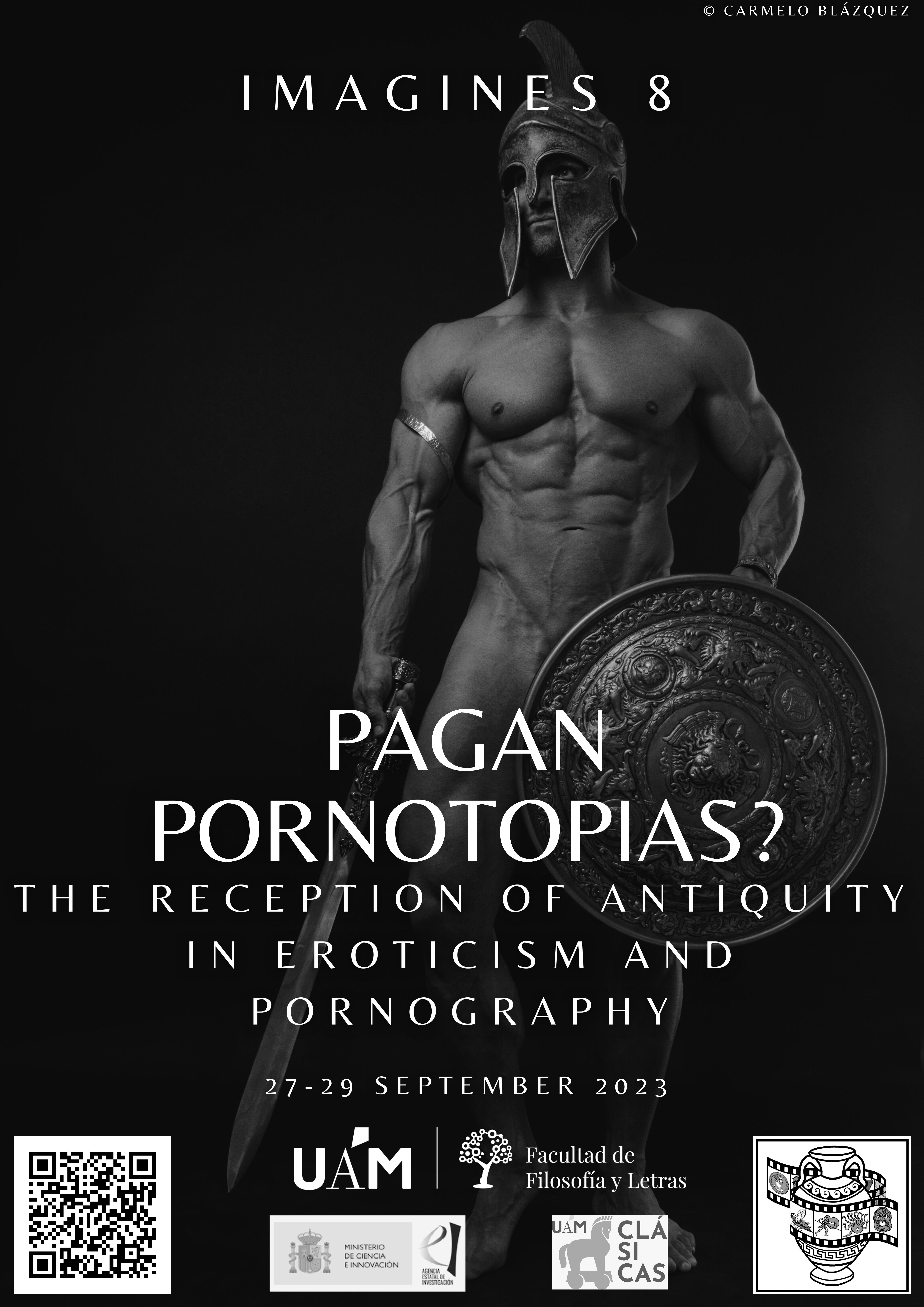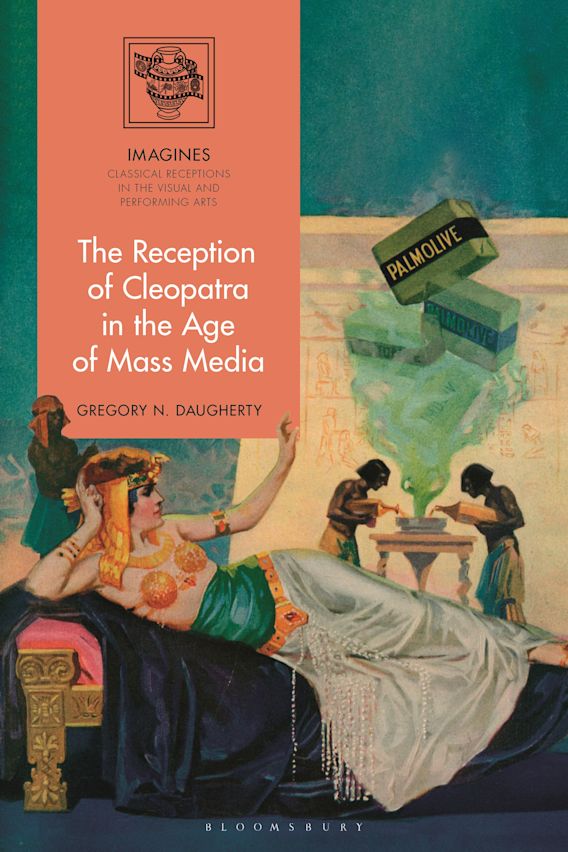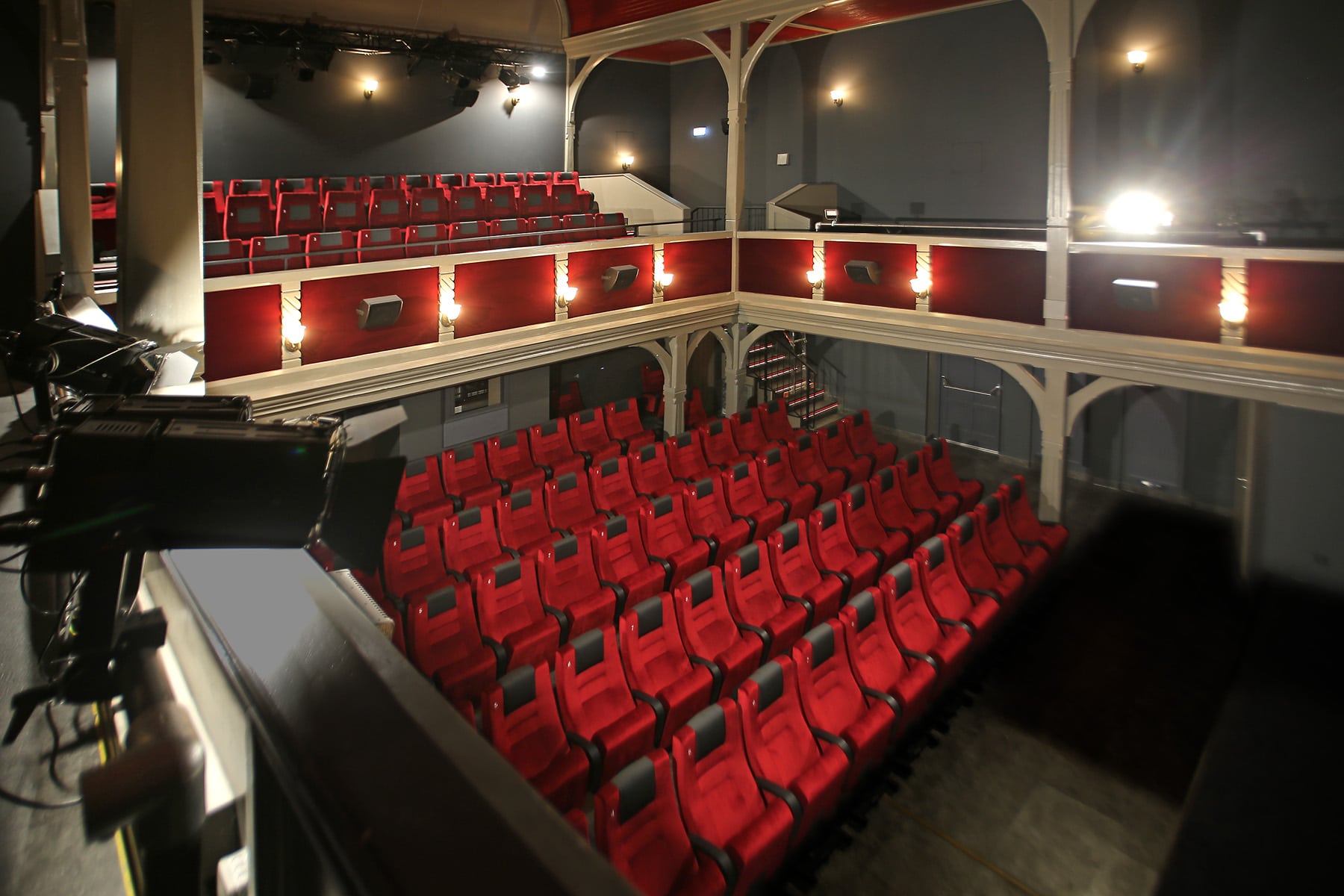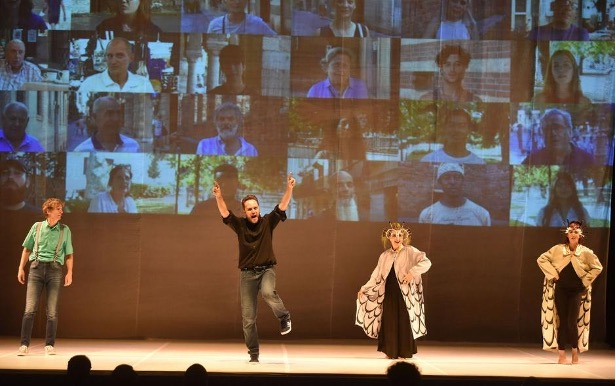Imagines 8
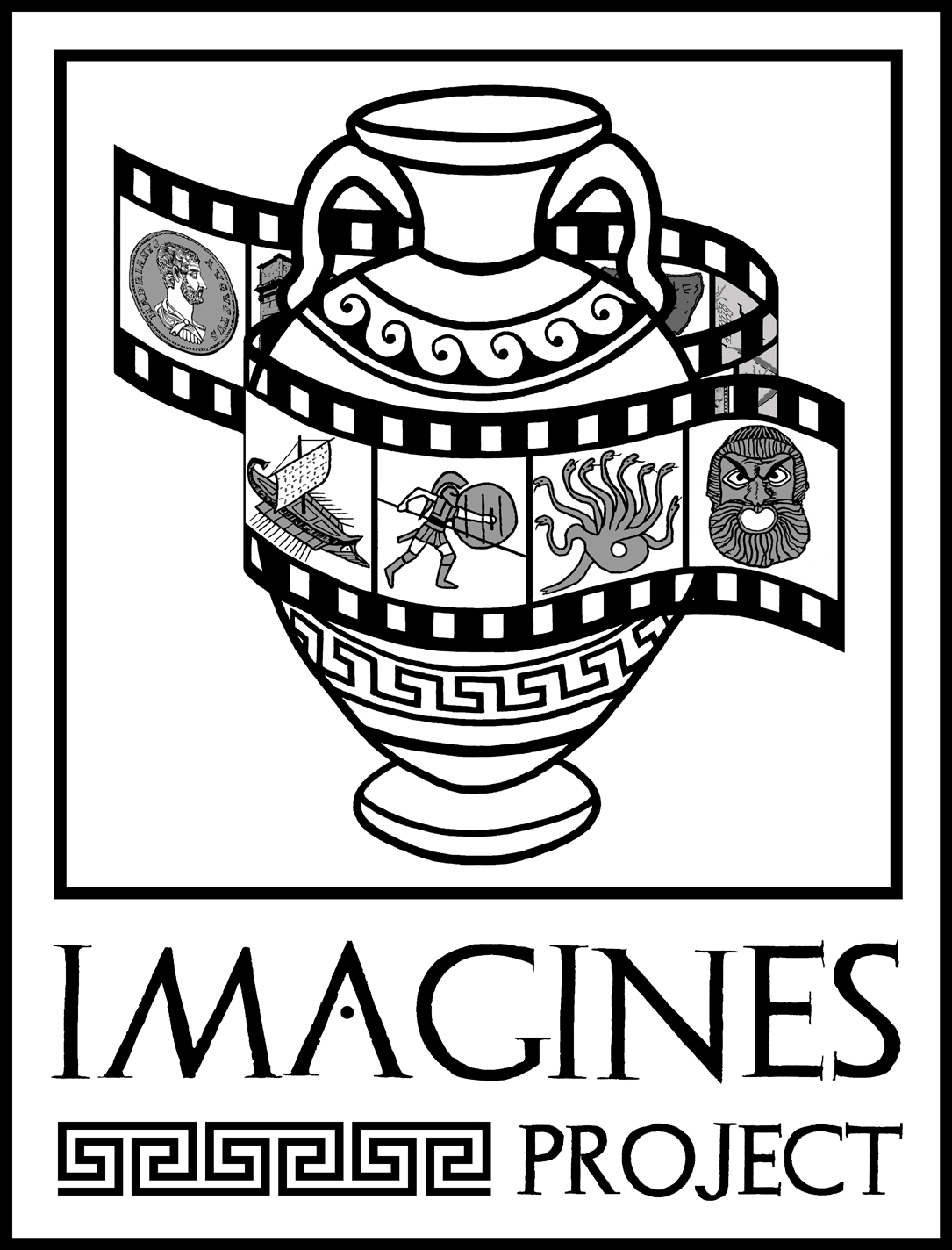
Pagan Pornotopias?
The Reception of Antiquity in Eroticism and Pornography
Madrid, 27-29 September 2023
Abstracts
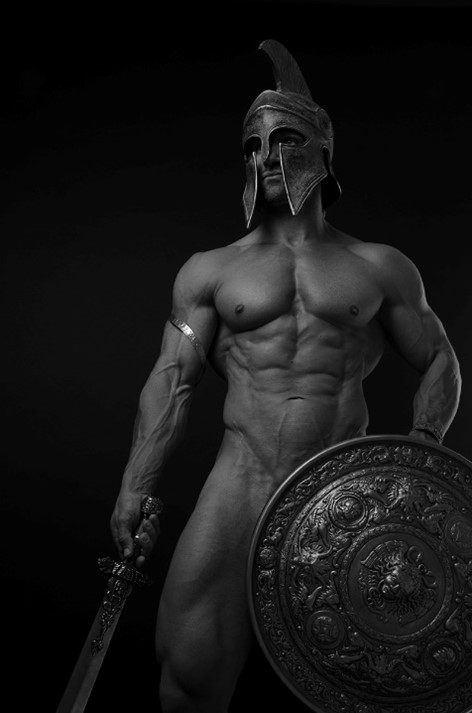
© Carmelo Blázquez
Panel 1: What Aroused Our Forefathers and Foremothers? Antiquity in 18th and 19th Century Eroticism
Katherine Harloe (London), Practical Enlightenment: Pagan Pornotopia in Casanova’s Encounter With Winckelmann
In a famous passage of his Histoire de ma vie, Giacomo Casanova tells of entering Johann Winckelmann’s Roman apartment to find him in flagrante with a prostitute. According to Casanova the young ‘Bathyllus’ fled and Winckelmann, laughing, delivered a homily justifying his pursuit of paederasty as part of a turn away from ‘cold theory’ (‘la froide théorie’) in his quest for knowledge of Greece and Rome, towards a new methodology of ‘enlightening myself through practice’ (‘m’éclaircer par la pratique’). This paper departs from previous interpretations of this passage as a piece of near-documentary testimony, using it instead as a starting-point for analysis of the proximity and interrelation of the connoisseurial and the pornographic in the eighteenth-century discourses concerning Greek and Roman art. While the mise-en-scène of this episode recalls the peephole scenes of notorious pornographic works such as L’histoire de Dom Bougre and Memories of a Woman of Pleasure, the words Casanova places in Winckelmann’s mouth conspicuously deploy the same topoi of aesthetic knowledge – ‘connoissance’ – found in Winckelmann’s writings on Greek art. Vision, desire, touch, experiment, and knowledge are invoked equally in both genres, in strikingly parallel ways, while thecompeting claims of ‘théorie’ and ‘pratique’ invoked here were staples of contemporary polemics around artistic, sexual, and religious knowledge-production. In locating the admiration of Greece and Rome in the context of the ‘sexual underworlds of the Enlightenment’ (Porter and Rousseau 1987), this episode helps us to excavate a differently eroticised, pagan-pornotopic construction of Greece and Rome in relation to a figure (Winckelmann) who has played a central role in the familiar story of Hellenism and ‘Platonic love’ as legitimating narratives of 19th- and 20th-century male homosexual identity.
Porter, R. and Rousseau, G.S., ed. (1987). Sexual Underworlds of the Enlightenment. Manchester, Manchester University Press.
Athena Leoussi (Reading), ‘La joie de vivre’: Modern Hellenism and the Revival of the Life of the Senses
The Great Awakening of European consciousness to what the Victorian writer, Walter Pater, called ‘the presence of man’ was the work of the Enlightenment. The Enlightenment sowed the seeds for the development of a modern human self-consciousness. It turned European cultural attention away from the biblical study of God and made the study of man, to use Isaiah Berlin’s words, ‘the proper study of mankind’. The discovery of humanity was not new. It had started with the Humanists (e.g., Erasmus) of the Renaissance. It was guided by reconstruction of the ancient Greek and Roman worlds through recovery and study of their cultural remains – visual and textual. These remains revealed visions and ways of life that were centred on mankind: the understanding and fulfilment of the nature of men and women. These visions had been suppressed by the mediaeval Church. The Enlightenment continued, intensified and democratised the Humanism of the Renaissance. To ‘know thyself’ was not confined to knowledge of human anatomy, in which Vesalius, building on Galen, had been a great pioneer in 1543. It extended to the re-affirmation of human reason, the human capacity to think; moral autonomy; and, most importantly for this conference, re-affirmation of the life of the senses –the joys derived from and through the human body. Modern Humanism (Shaftesbury, Herder, Winckelmann) saw in the Beautiful the true nature of Greek philosophy and the centre of Greek culture. The Aesthetic Movement was the offspring of the re-discovery of the joys of life. Although diverse in its objects, it modelled itself primarily on Greek principles – the beauty of the human body, both male and female. It set up the athletic forms of ancient Greek youth recorded in Greek statues, as key sources of the joys of life – the aesthetic and the erotic. Eros would be attracted to Greek forms. The paper explores the Greek models of the cult of joy as it found expression in English and French art in the second half of the 19th century.
Nikolai Endres (Bowling Green), A Pornotopia in Sicily? The Baron von Gloeden’s Reception of Antiquity
Purveyor of soft pornography in the late nineteenth and early twentieth centuries to the likes of Kaiser Wilhelm II and King Edward VII, host to queer celebrities such as John Addington Symonds, Oscar Wilde, Jacques d’Adelswärd-Fersen, André Gide, and Friedrich Alfred Krupp, inspiration for visual artists Kenneth Anger, Andy Warhol, and Robert Mapplethorpe, resident of Taormina with its Teatro Greco, Wilhelm Iwan Friederich August Freiherr von Gloeden (1856-1931) is a crucial yet neglected figure in the history of sexuality. He photographed Sicilian teenagers (fishermen, shepherds, peasants…) in nude poses, adding antique props such as columns, togas, sandals, wreaths, or amphoras to convey a setting in ancient Greece or Rome. Both celebrating paganism in its anti-Christian revelation of naked skin and presenting his iconography in terms of art rather than explicit pornography, the Baron von Gloeden nevertheless created a unique approach to the reception of antiquity. He eschewed images of warfare, muscularity, whiteness, instead offering highly erotic pictures of vulnerability, playfulness, homosociality, even femininity. Queer art historian James Saslow has dubbed Gloeden the “Grandfather of Colt Studios,” but considering Colt Studios’ very name and its hypermasculine actors such as lumberjacks, bodybuilders, policemen, or cowboys, this label applies better to Carmelo Blázquez. While there are plenty of softcore and hardcore versions of Greece and Rome (Private Studios’ The Private Gladiator, adapted from Ridley Scott’s 2000 movie The Gladiator, probably being the most explicit example), Gloeden’s photographs bear a reinvestigation in the context of classics beyond racism, toxic masculinity, and muscular body image. Acknowledging Homer and Theocritus (rather than Praxiteles or Phidias) as his inspiration, Gloeden features sunburnt skin, callused hands and feet, exhaustion and nostalgia. His vision of antiquity is classical indeed, pornographic maybe, but definitely not perfect – and therefore legitimizes non-traditional gender belonging and performance.
Stefania Arcara (Catania), “Dark, Virulent, Divine”: the Fin-de-Siècle invention of Sapphic Eroticism in Britain
Late-Victorian Hellenism has been traditionally associated with male homoeroticism and the unfolding of a male homosexual counter-discourse: through the cultural legitimation of classical antiquity, verbal and visual erotic/pornographic texts were produced by, and addressed to, a coterie of gay male literati and artists (the poetry of the Uranians, von Gloeden’s Sicilian nudes). Women’s engagement with Greek eros was not the symmetrical counterpart of the discourse produced by the university-educated male elite. The aim of this paper is twofold: firstly, to examine the cultural context of the late 19th century in which women, excluded for centuries from the homosocial spaces of higher education and classical learning, appropriated the discourse of Hellenism for their own erotic (and political) purposes. The newly emerging lesbian social subject had very few cultural icons at her disposal: the menacing ones of the Amazons and the Maenads, and the positive one of Sappho. Sappho, however, had been heterosexualized for most of the century as a poetic model of romantic, unrequited love, while representations of lesbianism in connection with classicism and eroticism were produced by male authors (Solomon’s painting “Sappho and Erinna”, Swinburne’s poem “Anactoria”, the grotesque depiction of the tribade by the pornographers-translators of the Index Expurgatorius of Martial). Secondly, I will trace the “invention” of Sapphic eroticism in relation to Hellenism in the context of the first women-only colleges in Britain. I will focus on the erotic subtext of Jane Ellen Harrison’s iconographic study Pictures of Sappho (1888), addressed to a female audience in The Woman’s World under the editorship of Oscar Wilde; on the explicit, decadent eroticism in the poems by “Michael Field” (Katherine Bradley and Edith Cooper) in Long Ago (1889), conceived as an “extension” of the Sapphic fragments, and on their Bacchic drama Callirrhoë (1884), pervaded by a “Dionysiac poetics” and a vision of Greek eros as liberatory but also destructive.
Panel 2: Ancient Models for Modern Sex
Anastasia Bakogianni (Auckland), Can Greek Tragic Heroines Ever be Sexy? Eroticism vs. Female Revenge
On both stage and screen, the tragic heroine Electra, tends to be portrayed in extremis. In modern stage productions and on film, she is usually meanly dressed, with short and/or disordered hair, caught up in a never-ending performance of grief, fueled by her deep-seated rage. In other words, Electra is far removed from ancient Greek norms of female beauty and decorum, and she unsettles modern audiences, too. Can such a protagonist ever be considered sexy, or are female revenge and eroticism incompatible, both then and now? In direct visual and performance receptions of the tragic heroine, her mourning and obsession with revenge code Electra as ‘undesirable’. A curated selection of representative modern production stills and short movie clips raise some troubling questions about gender and sexual desire. They demonstrate how closely gender stereotypes inform both ancient and modern judgments of women’s erotic potential. Electra is trapped in an unequal power relationship with her mother and Aegisthus; cast in the role of vocal, but ultimately (seemingly) helpless victim. In some modern incarnations Electra is physically assaulted to drive home this point. Her only weapons are her words but even those are often diluted to render her more sympathetic to audiences. This toning down involves further victimizing Electra and downplaying her desire for vengeance. It is only in an ‘indirect’ line of reception that a modern version of the tragic heroine becomes sexy, namely the shades of Elektra that appear in Marvel comics, films, and television series. But these modern heroine’s desire for vengeance places them outside societal and sexual norms, coding them as transgressive, even deviant. In the modern world, female grief and vengeance are still viewed as highly problematic and incompatible with normative behaviour. Electra’s reception can thus help us uncover some troubling aspects of ongoing public conversations about women, power, and eros.
Thomas E. Jenkins (San Antonio), Getting to the Bottom of Rufus Wainwright’s Hadrian: Identity and Bravery in Contemporary Opera
The Canadian staging of Rufus Wainwright’s recent opera Hadrian (2017/8)—based on the historical infatuation of the emperor for his lover Antinoos—features a head-spinning moment late in its running time. For much of the opera, narrated as a flashback, the emperor’s courting of Antinoos seems resolutely historical and perfectly in-sync with a received understanding of male same-sex desire in antiquity (such as in Youcenar’s Memoirs of Hadrian); indeed, Hadrian marvels at Antinoos’ beauty when they meet cute on a hunting expedition, and particularly praises the young man’s cheeks, which have yet to grow a beard. (Hadrian himself is older, bearded, muscular, and married.) In this sense, the relationship is limned as nearly Platonic: an erastes and an eromenos, engaged in a tasteful affair. But expectations are subverted first subtly, then explicitly, in a moment that the reviewer of the staid New York Times—of all publications—marvels at as “daring.” Though a chorus of scantily-clad male dancers provides some foreshadowing of a pornographic staging, it’s not until a late scene that the audience discovers the answer to the burning question: what exactly do they do in bed? At first, Hadrian comes off as, naturally, aggressive: a ‘top.’ But in a moment that literally upends two millennia of received wisdom, Antinoos flips the script and his lover, and mimics anal penetrative sex on the emperor, a moment that called for dropped jaws (and one audience member yelling ‘bravo!’). This talk examines the sorts of contemporary identities often encoded in receptions of ancient sexuality, and particularly the codification of gay sexual identities as penetrators/penetrated. Wainwright’s Hadrian thus advances the ‘queering’ of received sexual categories: categories famously structured as a matrix, but which contemporary artists may subvert to achieve shock—a shock that even reverberates within the pages of ‘the Gray Lady,’ The New York Times.
Anise Strong (Kalamazoo), Ancient Sexuality and Modern Video Games
It is a truism that pornography and erotica are amongst the earliest adopters of any new genre of media, whether woodcuts, sculpture, or text-messages. As computer and video games have become a true art form in their own right and expanded their audience to adults of all genders, they have also incorporated pornographic images and erotic themes into gameplay in a wide variety of ways, from the incentivized homicide of sex workers in Grand Theft Auto games to the romance-novel-adjacent themes of interactive novels. I shall examine how erotic storylines and pornographic imagery have been used to enrich and complicate the representations of the ancient Mediterranean past, focusing on Assassin’s Creed: Odyssey (Ubisoft 2018), Hades (Supergiant 2018), and Melos (Skarn, Katta and Anne 2015). In the AAA game Assassin’s Creed: Odyssey, which has been played by tens of millions of people around the world in the last four years, the player can choose to play as either a male character, Alexios, or a female one, Kassandra, adventuring through the classical Greek city-states in the 420s BCE. Regardless of the protagonist’s gender, throughout the game multiple opportunities for brief sexual encounters or longer sexual and romantic relationships with partners of both genders are made available, including orgies. If you choose to engage in those encounters, they also range in the amount of nudity and explicit lovemaking that they depict before “fading to black”. Various encounters, especially with the historical figure of Alcibiades, are also accompanied by strongly raunchy and eroticized dialogue that invokes the plays of Aristophanes and Herodas and the philosophical dialogues of Plato, such as a mini-quest that requires the player to break into a woman’s house in order to steal a particularly valuable dildo. Overall, AC: Odyssey depicts classical Greece as a world of freely available sexual encounters with a wide range of people with few restrictions based on gender, orientation, wealth, or social status, deliberately choosing to foreground the game designers’ values of diversity and tolerance over historical accuracy. In other words, it is an idealized pornotopia which offers modern players a chance for sexual experimentation in a popular, widely available premium video game. Hades, in contrast, was initially a more “indie” video game with a smaller budget and slower release, although it has since become increasingly popular and widespread. It tells the story of Zagreus, son of Hades, who is repeatedly trying to fight his way out of the Underworld to visit the surface realm and find his mother Persephone. Along the way, Zagreus meets most of the Olympian deities, some of whom, such as Aphrodite, are extremely scantily clad and portrayed as figures of desire and lust. He also has the opportunity to engage in romantic and sexual relationships with both the female Fury Megaera and the male Thanatos, the God of Death, as well as working hard to facilitate NPC romantic relationships between Orpheus and Eurydice, Achilles and Patroclus, and others. In all these cases, achieving a successful romantic relationship scores points and bestows benefits upon the player character. Zagreus was initially portrayed as almost entirely nude before being redesigned more modestly for the mainstream releases; the audience is clearly intended to find various of the characters sexually appealing and gratifying. Finally, Melos is an independent interactive novel focusing on a relationship between an ancient Greek woman poet and a Scythian warrior woman, interwoven with the poems of Sappho. While featuring numerous famous pre-Raphaelite paintings of semi-clad maidens, the erotica is primarily textual although quite explicit, and entirely lesbian in nature. Like Assassin’s Creed: Odyssey, Melos offers modern audiences a means of exploring queer sexuality within an ancient context, offering historical justifications for their own desires. All of these games are crucial for the study of classical reception in modern pornography and erotica precisely because they are oriented towards a potentially different audience than the traditional adult heterosexual male target of the vast majority of pornography. By offering the possibility for a wider variety of sexual encounters in romances by placing such encounters in an ancient Greek setting, they create a pagan pornotopia for the 21st century, idealizing Greek attitudes towards diverse sexualities and genders while allowing modern players to explore both the past and their own sexuality.
Panel 3: So We Dare Speak Its Name: Antiquity in (and for) Homosexual and Queer Desire
Filippo Carlà-Uhink (Potsdam), Performing Doric and Ionic Love: Ancient Greece in Gay Male Pornography
Homosexual practices in ancient Greece have been deployed since the Victorian period as a crucial legitimation strategy for the gay male community. Within the context of European and North-American philhellenism, the association of same-sex desire with the “cradle of civilization” became quickly an important asset in gay movements. In this way, “Greek love” became what can be called with Hobsbawm and Ranger a “gay tradition”, shaping identity and continuously re-told and reinforced within the gay community. This happened and happens not only at an “ideal” level – ancient Greece and the narratives and images related to it have also substantially shaped the representations and experiences of male same-sex desire. Particularly productive in this sense has been the “traditional” distinction, beginning with Karl Otfried Müller (1824), between Dorians and Ionians – the former associated with male homosexual couples of more or less same-age men, the latter with the model of a paedophilic relationship between an older man and a “pupil”. It is the aim of this paper to show how this narrative and model has been and still is productive – focusing on soft-porn and porn movies, including amateur productions, which explicitly refer to and reinforce these two “idealized” models of same-sex relations (and intercourses), while arguing that their “historical reference” to ancient Greece still has the function of recalling and reinforcing the idea of a “gay identity” finding its roots in the ancient Hellenic world. By referencing narratives and stories that are known to the addressed public – and that are also connected to specific images of an idealized male body – these productions generate sexual arousal within an established frame that also stirs up identification, belonging and self-ascription. The “positive feelings” deriving from this must nonetheless be considered in their broader societal and cultural implications – among which, most importantly, the transmission and reinforcement of a homonormative model excluding gender fluidity, and the reproduction of a racialized ideal beauty, embodied almost exclusively by white men. The films analysed will include productions such as “Greek Games 2000 B.C. (Before Clothes)” (Sharpshooter Studios, 1995); “Big Dicks at School” (MEN, 2012); “The Sacred Band of Thebes” (MEN, 2018).
Patricia A. Gwozdz & Markus Lenz (Potsdam), Subversive Hercules. How to Fashion Queer Desire in Popular Culture and Instagram
In the 20th century, the age of numerous large-scale military conflicts, a new body ideal prevailed characterized by hypertrophic musculature and strengthness. Classical and androgynous male body shapes were transformed into Herculean types which can be traced back to Michelangelo's frescoes. The era of bodybuilding went hand in hand with new hero stereotypes, such as those embodied by Steve Reeves and others in antic historical films of the 1950s and 1960s in the truest sense of the word, and finally, with Arnold Schwarzenegger in the 1980s, the era of action films with corresponding fighting bodies. But there was also a break with the type of Hercules Farnese because the queer mixed with the martial. The hypertrophic forms of classical masculinity were combined in the gay subculture with military attributes of the soldierly in order to turn the male body into a fetishized projection surface and the object of sadomasochistic fantasies. The works of the graphic artist Touko Laaksonen (1920-1991), who was to become a queer icon under the name Tom of Finland, would hardly be conceivable without classical models, even in their soldierly fetishized motifs, but at the same time they refer to the queer potential of Herculean ideals of beauty and the hypertrophic when they transform the fighting soldier into an erotic object of desire through the overemphasis of an anticizing carnality. By means of a few examples, it will be shown how much the recourse to the aesthetics of Greco-Roman antiquity lives on in the gay pornographic pop culture of the 20th century, but at the same time has been adapted to modern and postmodern structures of desire. Our talk will not just focus on the cultural history of pagan fashioning and its popular manifestations, but will also have a closer look on pagan censorship of queer desire on Instagram. For there is a zero-tolerance policy of nudity on one of the most popular mass social media platforms, we will present visual strategies of how pagan porntopia shapes queer/gay desire beyond algorithms of visibility and invisibility. The community on instagram who shares images of queer desire is – from the point of view of Queer/Gender Studies – yet still unrecognized. The archive of #drawingsatyr, for example, is a collection of Greek and Roman figures, images, mythologies and historical references which visualize stories of homoeroticism by using and combining art history with low brow culture content. One strategy is obviously to legitimize male pornographic content by highbrow culture, but on the other hand it also popularizes ancient knowledge about gay sexual culture for a broader community of young people who are maybe still figuring out their own sexual desires and queer life forms.
David Delbar (Chicago), Domination and the Minotaur
In response to visual-novel video games such as Hades (2018) and Minotaur Hotel (2019), internet artists have created a slew of erotic and pornographic fan art of the Theseus and Minotaur myth. In doing so they have adapted and sexualized the power dynamics of ancient depictions as well as refracted the post-classical reception history of the Minotaur myth through a new, queer BDSM lens, where uneven power dynamics become pleasurable rather than problematic. In ancient vase paintings, Theseus is almost ubiquitously in a powerful, dominant position over the Minotaur. He slays the monster in a display of Athenian dominance over the uncivilized world, and the Minotaur’s conception through the sexual union of bull and human woman is an oft-cited example of the bestiality taboo. The monster later becomes a symbol of dangerous male heterosexuality, such as his depiction in the Victorian work of W.T. Stead and George Watts or the feminist writings of Dorothy Dinnerstein. Contemporary artists have transformed many of these themes by placing them in a queer context. Artists have Theseus and the Minotaur alternate between taking dominant and submissive sexual roles, as well as being the penetrative or receptive partner. The labyrinth is reconfigured as BDSM imagery such as prisons and chains, while the bestiality element is fetishized in the online furry community (fans of anthropomorphized animals). Heterosexual, colonial conquest is thus consciously reconfigured into a playful exchange of power for mutual pleasure.
Dinnerstein, Dorothy. The Mermaid and the Minotaur. New York: Other Press, 1999 [1976]. MonoAnon and Nanoff. Minotaur Hotel. Version 0.6. itch.io. PC. 2019.
Rao, Amir et al. Hades. Supergiant Games. PC. 2018.
Stead, William Thomas. The Maiden Tribute of Modern Babylon. Lambertville, NJ: The True Bill Press, 2007 [1885].
Watts, George Frederik. The Minotaur. Painting. 1885. Tate Britain.
Panel 4: Spatialisations of Lust: Sexualised Antiquity in Architecture and Decoration
Jean-Noël Castorio & Stephanie Ferrand (Le Havre), The Monuments of the «Captain Storm» and the Neoclassical Erotism
Pierre-François Hughes (1719-1805), also known as the baron of Hancarville, or indeed as « captain Storm », as his friend Johann Joachim Winckelmann called him, is one of the great « antiquarians » of the second half of the 18th century, as is shown by his Etruscan, Greek and Roman antiquities, drawn from the cabinet of W. Hamilton, knight, published in London in 1766-1767 and rightly viewed by bibliophiles as one of the most impressive scholarly studies released during the Enlightenment. D’Hancarville, however, was not just an archeologist and a scholar, but also a forger and a libertine, the author of two erotic books that are still highly sought-after nowadays, the Monumens de la vie privée des douze César (Monuments of the private lives of the twelve Caesars) (1780) and the Monumens du culte secret des dames romaines (Monuments of the secret lives of Roman matrons) (1784). The two books, which supposedly showed images of genuine antique gemstones – that were actually of Hughes’s own making – were instrumental to reviving the tradition of the Loves of the Gods, dating back to the Renaissance and Marcantonio Raimondi’s well-known series of prints, and inspired by books of Jules Romain describing the lovemaking of divinities and heroes of Antiquity . The books met with considerable success, as attested by the numerous, sometimes illegal, reprints and a number of imitations, published across Europe. Indeed, Friedrich Karl Forberg included a few reproductions of the prints in his Manual of Classical Erotology, published in 1824, another highlight of the antiquity-inspired erotic literature that is closely linked with d’Hancarville’s books. The present conference is part of the preparatory work for the publication of the first critical edition of the Monumens. It aims not just to explore the largely unknown books as well as the life of their author, but above all to examine the important role they played at the start of the classical period in forming a vision of Roman antiquity allegedly freed from all sexual taboos.
Sanja Vucetic (Sheffield), Classical Greek Images of Sex as Modern ‘Adults Only’ Souvenir Art
In the modern day Plaka, a tourist hub of Athens, visitors can purchase ‘adults only’ souvenirs such as coasters, calendars, play cards, and lighters advertised under the title Greek lovers. These everyday objects feature a series of graphic sexual images found on the ancient Greek vases as well as a number of modern iconographic inventions – fake ancient images of sex – produced in the same Classical Greek style but portraying sex between two men. I this paper I look at how the distortion of ancient and modern ideas about ancient Greek sexuality and cultural identity play a role in constructing, stereotyping, and re-defining discourse about modern and ancient sexualities, erotic desire, and sexual practices. More specifically, I examine how these modern souvenirs use and reference Classical Antiquity in order to legitimise the contemporary same-sex attractions but also convey the message of Greek national identity that is linked to hetero-masculinity and exceptionalism.
https://www.souvenirsfromgreece.com/product/greek_lovers_playing_cards_%28no.1%29 Hardy S. (2004). The Greeks, Eroticism and Ourselves. Sexualities, 7(2), 201–216.
Kilmer M.F. (1993). Greek Erotica on Attic Red-Figure Vases. London: Duckworth.
Lynch K.M. (2009). Erotic Images on Attic Vases: Markets and Meanings. In: Oakley H and Palagia O. (eds) Athenian Potters and Painters 2. Oxford: Oxbow Books, 159–165.
Jorge Elices Ocón (Madrid), Marble Breasts and Phalli of Stone: Classical Statues as Erotic Reference and Pornographic Transgression in the Islamic World
El objetivo de este trabajo es señalar el papel de la antigüedad y de las estatuas clásicas en la construcción de lo erótico y pornográfico en el mundo islámico. Destaco ante todo el papel agente de las estatuas en el proceso de recepción, tanto en época medieval como contemporánea, analizando varios casos de estudio derivados de las fuentes escritas y materiales que ahondan en la experiencia erótica y sexual que surge del encuentro con las estatuas y que incluyen diversas respuestas, desde la agalmatophilia a las destrucciones de estatuas por parte de DAESH. En primer lugar, analizo estatuas descubiertas y reutilizadas en un nuevo contexto islámico que contribuyeron a ratificar y justificar determinados códigos sexuales y morales en la sociedad islámica. En estos ejemplos, las estatuas son modelos o referencias eróticas que sirven para ratificar el antiguo discurso de género y sexualidad adscrito a hombres y mujeres. Posteriormente, me interesa destacar también cómo las estatuas clásicas condicionaron y rompieron los moldes tradicionales del proceso de recepción al trasladar la imagen de otros cuerpos, conductas e identidades diferentes y potencialmente liberadores o subversivos en relación con el presente islámico. En estos casos la estatua clásica es una excusa que justifica determinados actos considerados inapropiados u obscenos, un agente transgresor que incita a las personas a actos eróticos o pornográficos que cuestionan el discurso de género y sexualidad tradicional en el mundo islámico. Finalmente, considero dos casos de estudio en relación con las destrucciones de DAESH donde ambas perspectivas de recepción (referencia y transgresión erótica o pornográfica) vuelven a sobresalir, poniendo de relieve el complejo proceso de recepción de las estatuas en el mundo islámico.
Ricardo del Molino (Bogotá), El clasicismo de burdel en América Latina. La antigüedad egipcia, griega y romana en prostíbulos, moteles y hoteles de tránsito hispanoamericanos
En el horizonte actual de los estudios de recepción clásica, en particular dentro de la sensibilidad que se ocupa de la antigüedad en la cultura popular (Bièvre-Perrin, Carlà-Uhink, Gloyn, o Unceta, entre otros), y en el marco del proyecto de investigación ANIHO (PID2020-113314GB- I00), la comunicación propuesta en la VIII conferencia del grupo Imagines analiza la recepción de la antigüedad egipcia y grecorromana en los establecimientos hispanoamericanos donde acontecen relaciones sexuales consensuadas previo pago. Muchos prostíbulos, moteles, hoteles de tránsito, saunas o salones de intercambio de parejas de América Latina tienen nombres referidos a la antigüedad (Afrodita, Atenas, Faraón, Olimpo, Venus, Zeus, etc.), algunos poseen fachadas que reproducen templos egipcios, griegos y romanos (Cesars Palace en Quito, Faraón en Puebla, Indiana en Cartagena de Indias, etc.), y otros, con frecuencia, ofrecen habitaciones temáticas inspiradas en las antiguas civilizaciones mediterráneas (777 en Chile, Kiss Me en Colombia, Romanos en Ecuador, Osiris en Argentina, etc.). El conjunto de todas estas evocaciones recibirá en la presente comunicación la denominación de clasicismo de burdel hispanoamericano. La investigación sobre el clasicismo de burdel se ocupa tanto de la presencia ornamental como del papel que cumplen las referencias a la antigüedad en estos establecimientos, bien sea para construir nuevas regiones morales (Guimaraens & Cavalcanti) o pornotopías (Preciado, Unceta), o bien para facilitar la transfiguración performativa de los usuarios, como consecuencia de su alejamiento de la moral judeocristiana. Sea como sea, la presencia de la antigüedad en burdeles, moteles y otros espacios donde se tiene sexo en Hispanoamérica contribuye a reforzar la imagen erotizada de la antigüedad en la cultura popular actual de América Latina., construida a partir de la mirada claramente masculina, aportes particulares americanos y una recepción mediada cuya génesis y diacronía también serán objeto de estudio en la presente comunicación.
Tanja Kilzer (Siegen), “Sexy Goddesses and Handsome Gladiators” – Eroticized Stereotypes of the Antiquity in the US-American Hotel Business of Jay Sarno in the 1960s
Pretty, tanned girls called “goddesses” and also “slaves” dressed in tight, antique-style dresses move through richly decorated rooms, feed (mainly male) guests with grapes, and offer them sensitive neck massages after a decadent meal, while their muscular, handsome male counterparts in stereotyped gladiator armor welcome guests, unload luggage and pose for photos. Even if those scenes seem like something out of a novel or movie with slightly erotic elements, these and similar scenes played out in the predominantly conservative America of the 1960s in the luxury hotel resorts of the influential hotel mogul Jay Sarno, who owned the well- known Caesar's Palace hotel in Las Vegas and other similar resorts across the country. Based on general and erotic clichés about antiquity, which were mainly spread through contemporary Hollywood movies and other popular culture media, he created a themed world that inspired the imagination of his guests and also did its part to spread the prevailing erotic clichés about antiquity. Current films like “Cleopatra” (1963) or "The Fall of the Roman Empire" (1964) were popular and nourished the myth of antique decadence and extravagance with a hint of eroticism. Like the movies with their richly furnished film sets, Sarno’s Hotels created an image of lavish indulgence. Deliberately he named the individual entertainment facilities in his building with names associated with Roman times, while some of them indirectly referred to the supposedly lax Roman sexual morals, such as the "Bacchanalia" restaurant. Named after a festival that is mostly associated with wild revelry, alcoholic excesses and sexual debauchery, it played with the imagination of the guests and offered slight eroticism through a subliminally sexualized choice of words by the waitresses (“your wish is my command, Master” etc.). In addition to the conscious use of the “ancient” costumed, scantily clad staff, also the lecture should focus on the selection of antique-looking decoration with erotic components (especially the selection of sculptures) and the use of erotic components in the area of hotel advertising etc. and their interaction with common popular culture ideas about Roman antiquity and eroticism of this time.
Carmelo Blázquez Jiménez (Barcelona), De héroes y efebos. Referencias clásicas en mi fotografía
Con esta intervención, pretendo ofrecer una panorámica de mi fotografía de desnudo masculino de temática clásica, que tomará como eje conductor los conceptos de “héroe” y “efebo”. Sobre la base de algunas de mis creaciones, trataré de identificar los mecanismos que me permiten, a través de algunos elementos, como simples objetos o poses, activar referencias a la Antigüedad que convierten a los modelos en representaciones eternas e inmortales de héroes o dioses de la mitología clásica. Además de profundizar en la manera en que ambas ideas se plasman en mi fotografía, me detendré en las influencias que les han dado forma: clásicas y contemporáneas, y tanto literarias como artísticas (de artes oficiales, como la pintura y escultura, pero también de la cultura popular: ilustradores, revistas y películas péplum).Panel 5: Antiquity Goes Hard: Greece, Rome and the Pornography Debate
Martin Lindner (Göttingen), X-Rated Classics – Cinematic Antiquity and the Impossibility to Classify Pornography
Soon after the invention of film in the late 19th century, classical antiquity became popular as justification for showing sexualized content on screen. Since then, our tolerance towards “what should be visible” has not so much increased, but fluctuated. This constant change will continue with each generation, society and individual. Research into the phenomenon of mass market pornography has only started to grasp just how much personal stances on the subject (or even the criteria for what constitutes pornography) may vary. Film is often identified as the locus for pornography in classical reception studies. Yet most researches accepting that premise seem unaware not only of the sheer amount of material, but also of the methodological difficulties connected to its analysis. My paper will demonstrate the problems that arise from a lack of awareness and/or a blind application of ill-fitting models and terminologies, before indicating a potential way out of the dilemma.
Alastair Blanshard (Brisbane), But Is It Pornography? Locating Obscenity in the Classicising Photographs and Films of Mid-Century Physique Culture
This paper examines the way in which the photographs and films produced by mid-century physique culture proved to be such an important location for reflections on the nature of obscenity and pornography in the US. Through a series of public scandals and high-profile legal cases, the limits of the acceptable and unacceptable were tested and defined. Classical imagery and the status of classical art played an important role within these discussions. This paper explores how the classical world was deployed in these images and investigates their meanings and the affects that they generated for their predominantly queer viewers. It explores the political freedoms that these images engendered as well as the limitations of this imagery and the politics that it supported.
Florian Freitag (Essen), Traditions Revisited and Continued: Antiquity in the new Physique Pictorial
The year 2017 saw the relaunch of America’s first and most famous beefcake magazine, Physique Pictorial, after a hiatus of 27 years. Now published by the non-profit Bob Mizer Foundation out of the “gay capital of the world” (San Francisco) rather than by the Los Angeles- based photographer and physique pioneer Bob Mizer, the “new” Physique Pictorial is no longer conceptionalized as a commercial beefcake publication, but rather as an indie magazine about beefcake, a venue to create awareness of the genre and its history, and thus also to reclaim beefcake’s space among the gay institutions of pre-Stonewall America. As a veritable homage to beefcake, the “new” Physique Pictorial mixes photographs and texts reprinted from the original with articles about Mizer in particular and beefcake photography in general as well as portfolios by contemporary beefcake photographers. As pictorial reinterpretations of earlier beefcake photography, these portfolios also take up and play with the various forms of references to antiquity that pervaded Mizer’s and his colleagues’ pictures, thus throwing a new light on the role of antiquity in beefcake. Long interpreted as an “alibi” to fool censors, the “new” Physique Pictorial showcases, both in its reprints and in its new material, in one magazine the plurality of approaches to antiquity that originally had been spread over a multitude of titles – from the rather serious summoning of ancient Greece for the purpose of creating a transhistorical continuity of homosexual desires in Grecian Guild Pictorial to the playful and sometimes campy remediations of contemporary sword-and-sandal epics in the “original” Physique Pictorial. The magazine thus invites its readers to (re)discover the diversity of beefcake photography, including the diversity of beefcake’s antiquities.
Charlotte Gregory (London), The Dynamics of Interracial Pornography in Troy: Fall of a City (2018)
“Colour-blind” casting, an assault on Helen, and a threesome thrown in for good measure… This paper explores the ways in which these deviations from the classical tradition in Troy: Fall of a City (2018) impact both the representation of Achilles in the series and audience receptions of his character. Of particular interest are the ways in which the series seemingly draws on modern conceptions of race and sexuality, such as in the threesome between Achilles, Patroclus, and Briseis – an entirely new creation of the showrunners – which includes allusions to interracial pornographic tropes such as the young white woman engaged in sexual acts with multiple Black partners and the inversion of the historical dynamics of white masters and Black slaves to Black masters and white slaves. Also of interest are the ways in which the series draws on white fantasies and anxieties about Black men, such as the popular pornographic sub- category of ‘cuckold porn’ and the perception of Black men as sexually dangerous and possessing large penises, as seen in Achilles’ assault of Helen, another invention of the showrunners. By analysing key visual features of the medium of television, such as its use of silhouettes and lighting, this paper delves into the complexities of adapting the ancient world for a modern audience and the impact of race on perceptions of sex and sexuality.
Anna Socha (Liverpool), The Iliad 2: A (Very) Dirty Story. Sexualised Retelling of the Iliad and Odyssey
Illicit sexuality underpins the plot of Homer’s Iliad for the original cause of hostility between the Greeks and the Trojans was Paris’ abduction of Helen, at that time the wife of the Spartan king Menelaus. Authors of The Iliad 2 play with the audience’s familiarity with Homer and provide “an 18 minutes long spicy animated film, a twisted version of the Greek tale, the Iliad. A true cult animation of epic proportions” (the producers’ description). In this production, it is not so much pornography itself that need analysis, but the way the adult content is understood and what is its importance. Hence, the aim of this paper is to examine what connotations and consequences this sexual content generates. In the first place, I would like to discuss the animated version through the lens of Christian morality: is this cartoon, with all sorts of sexual possibilities available, a rendition of pagan “pornotopia”? Is it, in its exaggeration, a critique of commonplace stereotypes? Secondly, my objective will be to refocus the familiar epic narrative to make it about sex. The shift does not alter the events but presents opportunity to form a “Priapic” reading of the epic. This sexualised retelling, by reverberating the Carmina Priapea, especially Priapea 68, does not seem to be asking the audience to re-evaluate Homer, but it points out and establishes the potential for different readings of Homer.
The proposed “reading” has the following effects: it demonstrates the power of parody to adapt a celebrated genre of ancient poetry (i.e. epic) into its obscene little equivalent and, possibly, to re-evaluate audiences’ unfavourable opinion about the pornographic version of the Homeric work.
Luis Unceta Gómez (Madrid), Pagan Pornotropes. Ancient Rome and the Erotics of Power in Pornographic Comic Books
Ancient Rome, and especially the Imperial period on the basis of the ancient accounts on the depravity of the emperors, has nourished the popular erotic imagination along the centuries. This pornotopical construct (Nisbet 2009) has had a myriad of manifestations (Blanshard 2010: 3–97; Unceta Gómez 2020a) and it can be argued that is still fully an effectively operational nowadays in different mass media (Unceta Gómez, 2020b). In this paper, I will explore the intersectionality of power and gender in explicitly sexual narratives of the (imperial) Roman pornotopia, through the analysis of straight pornographic comic books set in ancient Rome (such as Messaline – Les fêtes du Palatin and Caligula by Michel Duveaux; Messalina by Jean- Yves Mitton; and The Roman Life of Laura by Erich Von Gotha, among others). Grounding on Hortense J. Spillers’ concept of “pornotrope”—originally coined in reference to the process of dehumanization of the black female slave as object of violence and sexual abuse—, I will argue that in this kind of sexual fantasies set in ancient Rome, sexual abuse towards women (primarily but not exclusively if they are slaves) is a source of empowerment, since it facilitates the gaining of sexual agency and hence it enables them to overturn the existing sexual and social dynamics and limitations imposed by power and hierarchies.
Blanshard, Alastair J. L. (2010). Sex, Vice, and Love from Antiquity to Modernity, Malden, MA/Oxford/Chichester, Wiley/Blackwell.
Nisbet, Gideon (2009). “‘Dickus Maximus’: Rome as Pornotopia”, in Dustan Lowe and Kim Shahabudin (eds.), Classics for All: Reworking Antiquity in Mass Culture, Newcastle upon Tyne, Cambridge Scholar Publishing, 2009, pp. 150–171.
Spillers, Hortense J. (1987). “Mama’s Baby, Papa’s Maybe: An American Grammar Book”, Diacritics 17(2), pp. 65–81.
…..
